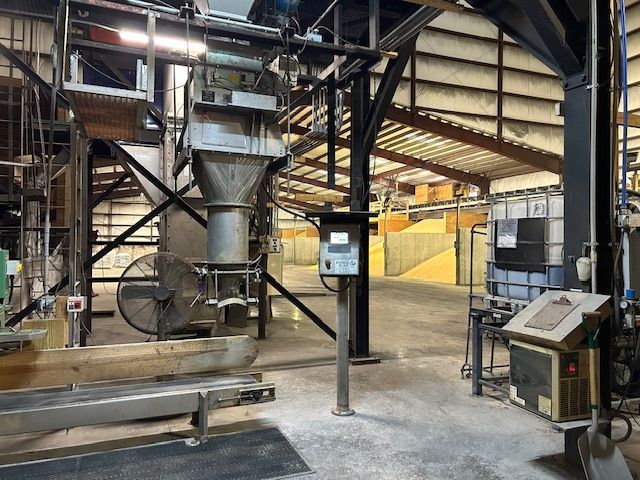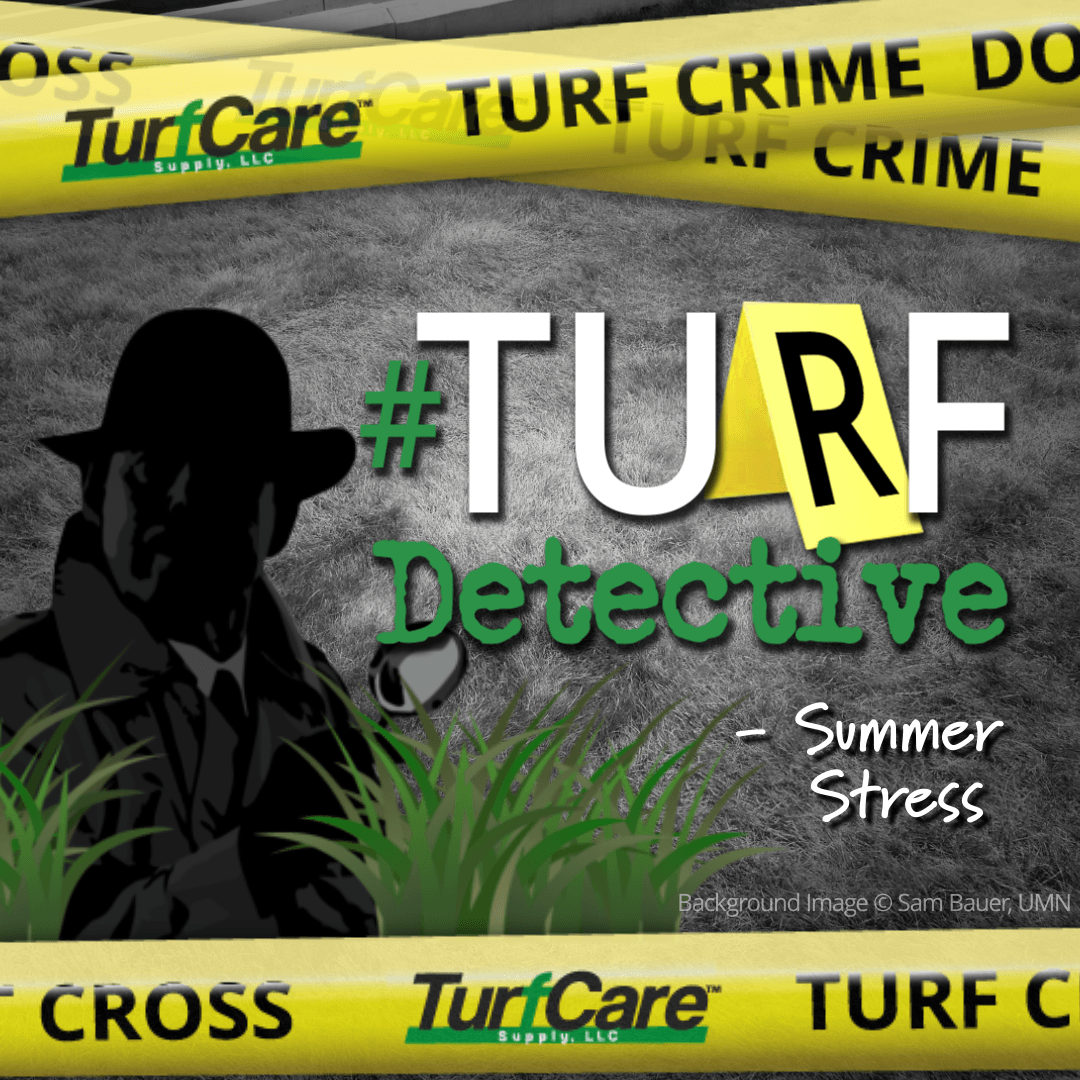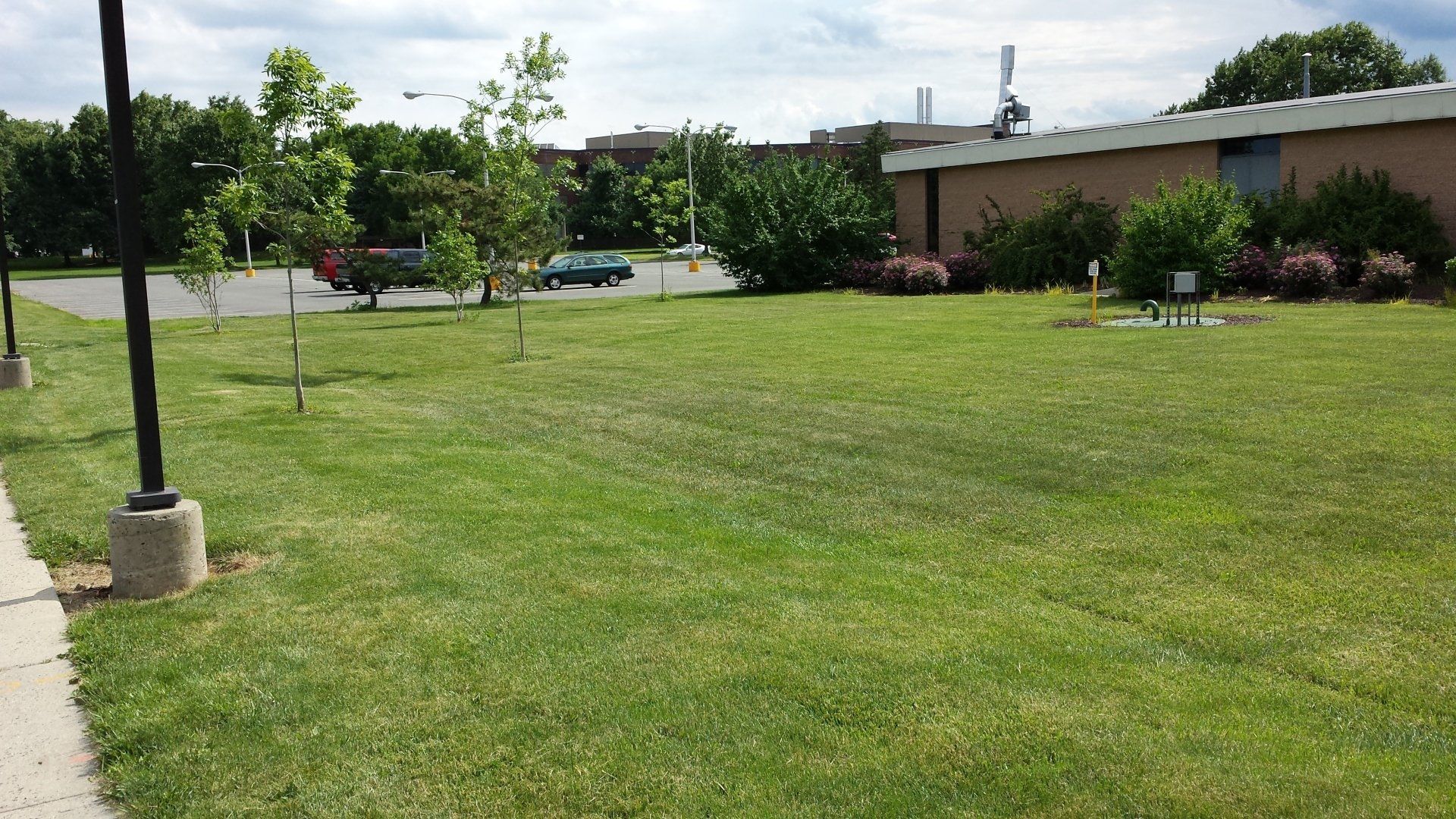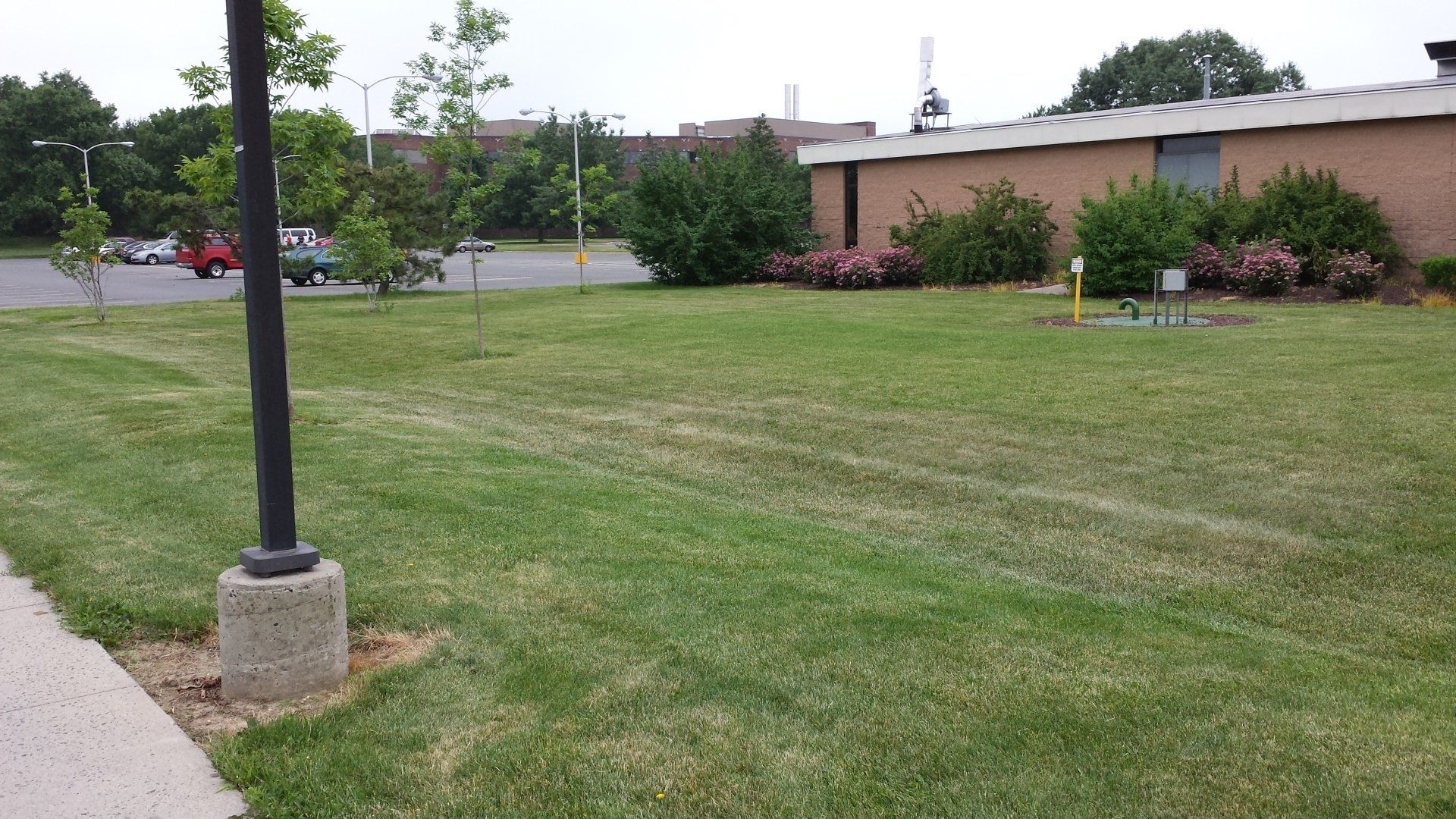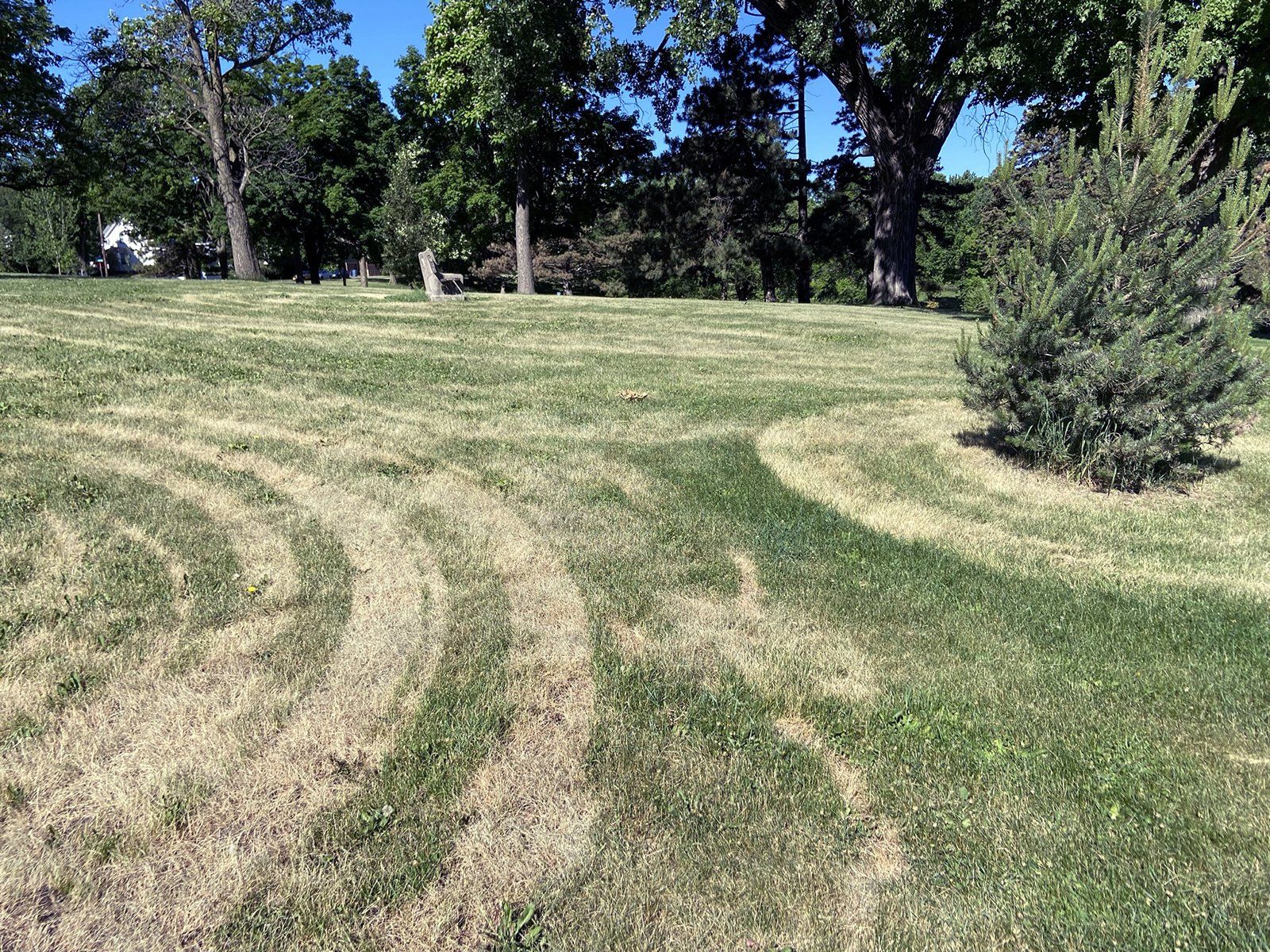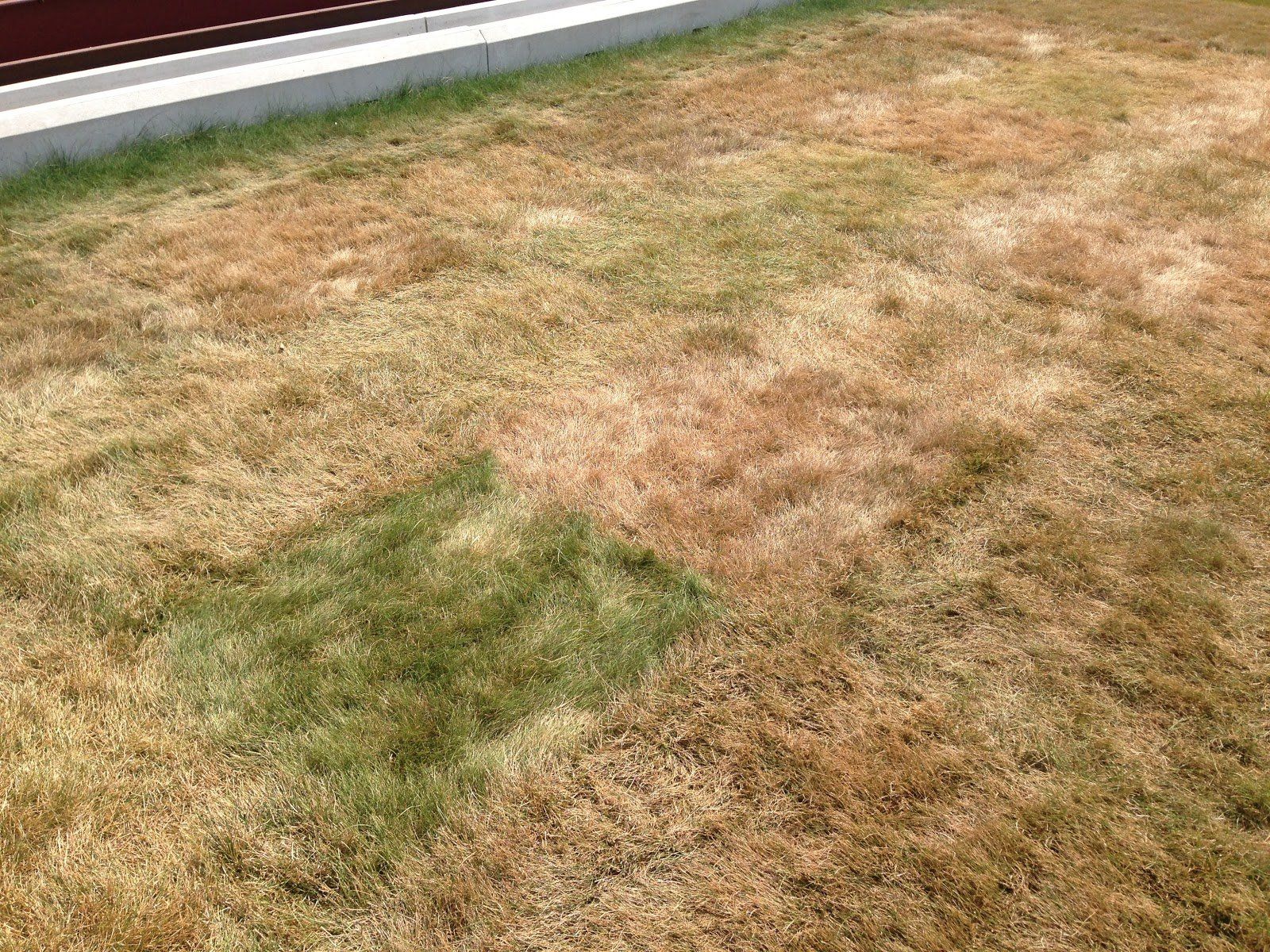Introduction
When summer temperatures rise and drought conditions set in, turf quality can suffer, even in healthy turf. Turf that was green and lush during the spring can be at risk for turning brown and going dormant during the summer months. This can lead to insect and weed infestations as well as other diseases that can result in additional turf damage. Being aware of these abiotic stresses can help lawn care operators, turf managers, and homeowners take steps to mitigate the damage from these stressors.
What is Summer Stress?
Comparison of wilt stress after 3 days of high heat and drought conditions.
Summer stress is primarily driven by a combination of two abiotic stress factors: heat stress and drought stress. Both stress factors create a decline in the overall quality of the plant’s health. Summer stress is more common with cool season turfgrasses (Kentucky bluegrass, perennial ryegrass, fine fescue, and tall fescue). However, warm-season turfgrasses as well as other drought-tolerant turf species are also susceptible to injury, especially if the turf is located on southern slopes, in shallow / compacted soils, or in soils deficient in water.
Summer stress can often be a trigger that causes turf to enter dormancy. While dormancy isn’t necessarily bad, it isn’t desirable, especially when healthy turf is critical for athletic fields and other recreational activities. While in dormancy, turf is also more susceptible to weeds, pests (such as insect infestations), and various diseases. "A combination of mechanical stress, heat stress, and heavy rain can also push turf over the edge, possibly culminating in damage ranging from thin turf to rapid decline,” writes Elliot Dowling and Blake Meentemeyer of USGA. Allowing your turf to enter dormancy is contingent on your lawn’s ability to develop deep, healthy roots during periods of active growth. Without a well-developed root system, your turf may end up dying during dormancy.
Drought vs. Heat Stress:
Heat Stress
When temperatures exceed 60-75°F (the ideal range for cool-season turfgrasses) turf metabolic rate and health begin to decline. Turf may become susceptible to tire track burn (also known as heat tracking) leading to the creation brown spots in specific areas. After some time, turf grass may enter dormancy to conserve energy. When cool-season turf enters dormancy during heat stress, it consumes less water and can stay in this state for up to 4 weeks before the risk of tissue death becomes problematic. Dormant turf is not dead, although it can be hard to tell the difference once dormancy has taken full effect. When dormant, turf can turn brown. It will come out of dormancy and green up with regular watering once temperatures begin to drop.
(Left) Tire track burns left on turf experiencing heat stress.
(Right) Cool-season turf has entered dormancy while a patch of warm-season turf stays green.
High air temperature is not the only factor that contributes to heat stress. Heightened soil temperatures can also be detrimental to turf health. "In a controlled study at Rutgers University, the researchers exposed creeping bentgrass plants to increasing soil temperatures while holding the air temperature constant at 68 °F. Above 70 °F, they observed a decline in root mass, length, and activity, which continued to decline with increasing soil temperature" writes
Dr. T. K. Danneberger and Dr. J. R. Street & P. J. Sherratt. When soil temperatures exceed a daily average of 70°F, cool-season turf root mass can be negatively impacted by more than 50%. Cool-season and warm-season turfgrasses perform best at specific temperatures. The key is making sure the soil moisture is adequate. Without moisture in the soil, turf risks drought stress and plant death.
Drought Stress
Drought stress is another major problem for turfgrass varieties. Although warm-season grasses can withstand the heat of summer in most areas when compared to cool-season grasses, both are subject to drought stress and risk going dormant without water. Turf will begin to show signs of drought stress when the amount of water lost in transpiration is greater than the amount of water available. Drought stress is most noticeable on slopes as well as turf that is established in shallow or poor soil. The quality of the soil is key to the quality of the turf.
Lack of water (rainfall or irrigation) can lead to a decrease in growth due to a decrease in photosynthesis and plant respiration and an increase in plant temperature. Put together with the already high summer temperatures, turf that undergoes drought stress is at risk of death. Knowing how to spot the beginning stages of drought stress is important to keep your turf healthy.
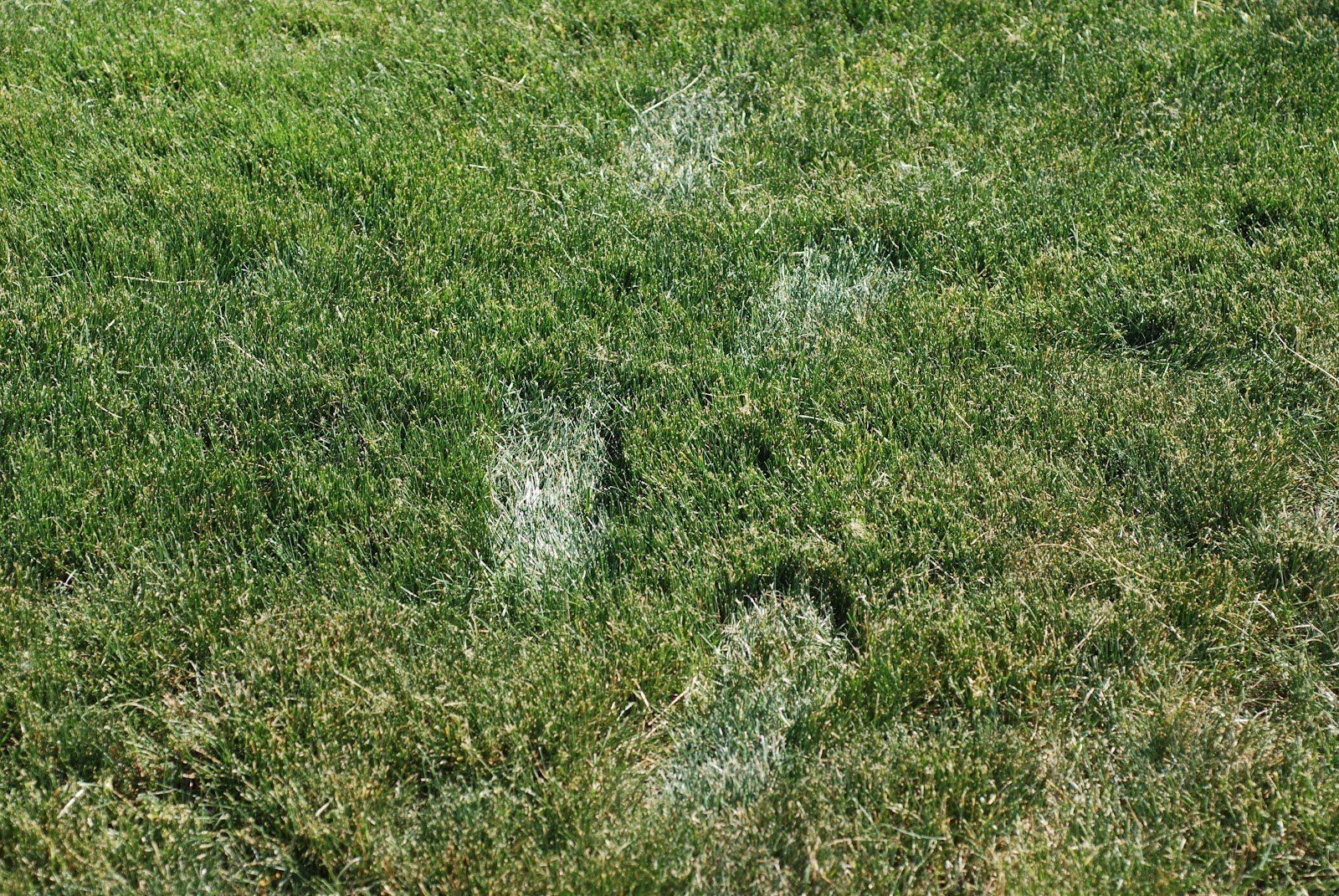
A loss in elasticity in the plant walls of turf during drought will result in footprints lasting several minutes to hours on turf before bouncing back up.
Symptoms of drought stress can vary depending on the turfgrass species and the severity of water limitation. Some turf goes through discoloration during the initial signs of drought stress. An example would be Kentucky bluegrass going to a deeper blue color. Another symptom is the leaf blades of most turfgrasses folding lengthwise, giving the appearance of thinner turf. As turf becomes dehydrated, the plant walls begin to lose elasticity, which results in "foot printing." Foot printing is when footprints on turf last several minutes to hours before bouncing back up. Healthy turf will spring back up without resistance. You can also check for moisture by pushing a screwdriver into the soil. If any resistance is given, the soil most likely requires additional water.
Prevention
Summer stress can cause your turf to change from green to brown in a matter of days or weeks. Having a deep, healthy root system is key to ensuring much of the moisture in the soil is being taken up with maximum absorption. Biological products such as AMP-XC™ can help your turf grow stronger and deeper roots while improving the quality of the soil. AMP-XC™ is a rich source of proteins, amino acids, organic acids, volatile organic compounds (VOCs), fulvic acids and natural bacteria that results in optimal plant performance, improved plant health, strengthens turf against abiotic and biotic stresses (including heat and drought) and triggers the development of deep root growth.
It is also important to reduce soil compaction to promote healthy root development during the spring. Aerating or adding organic material to the soil like humic can help soften the soil. This allows for an increase in moisture storage and nutrient uptake. Creating a fertilization plan with metered nutrition and soil enrichment products will increase turf's ability to tolerate various summer stresses. Soil amendments such as Hi-Calcium Lime or Gypsum can also be used to improve soil health, create a neutral soil pH and developing an ideal environment for root growth.
Other tips to reduce turf stress include raising your mower height at the beginning of summer. This allows turf to provide more shade to the soil, thus reducing evaporation and conserving moisture. Don’t forget to properly irrigate. Assure that water is being evenly distributed and that there are no areas of poor soil drainage. In addition, increasing the use (percent in the bag) of slow or controlled-release fertilizer technology like XCU™ or TTRU™ prior to summer will provide reliable and extended nutrition, feeding your during times of stress.
Recovery
If your lawn is already experiencing heat stress, make sure your soil is adequately watered. Keep up with the best watering practices for your turf species and location to reduce the risk of disease and other issues. If your lawn has already gone dormant, breaking dormancy may drain the reserves within the turf, and if summer stress conditions continue, the plant may not fully recover. It is important to water as efficiently as possible to promote dense, healthy turf. During a drought, watering deeply but infrequently will help your turf recover.
Keeping note of the problem areas within your turf is also key. Be sure to take note of any pest issues as well as weeds. Once turf has woken from summer dormancy, it is important to apply a post-emergent herbicide to control any weeds that may have appeared when the turf was dormant. Turf that experienced damage or death from summer stress should be reseeded or sodded during the fall.
In Summary
Prevention is key! Identify the issues your turf typically faces in summer and make sure you prepare your turf in spring. Apply fertilizers with extended nutrition to feed your turf in times of stress. Include biologicals and soil amendments in your turf management program to strengthen the roots and optimize nutrient and moisture uptake. Irrigate or efficiently water to avoid dormancy or damage.
For professional fertilizers, soil amendments or biologicals like AMP-XC , humic or sea kelp products, visit Turf Care Supply’s online Product Catalog.
References:
https://journals.ashs.org/hortsci/view/journals/hortsci/48/12/article-p1562.xml
https://sturf.lib.msu.edu/article/2014jun12.pdf
https://www.gcmonline.com/tags/summer-turf-stress
https://turf.unl.edu/turfinfo/managing_your_lawn_in_summer_heat.v2.pdf
https://turf.purdue.edu/summer-stress-4/
https://www.jclandscapingllc.com/lawn/heat-stress-and-how-to-treat-it/
https://turf.purdue.edu/summer-stress-3/
https://agrilifeextension.tamu.edu/solutions/lawn-care-tips-for-summer/
https://web.extension.illinois.edu/lawntalk/weeds/managing_lawns_during_drought.cfm
https://www.purdue.edu/newsroom/outreach/2012/120628PattonLawn.html
Photos:
Turf Care Supply - TurfReport Blog
